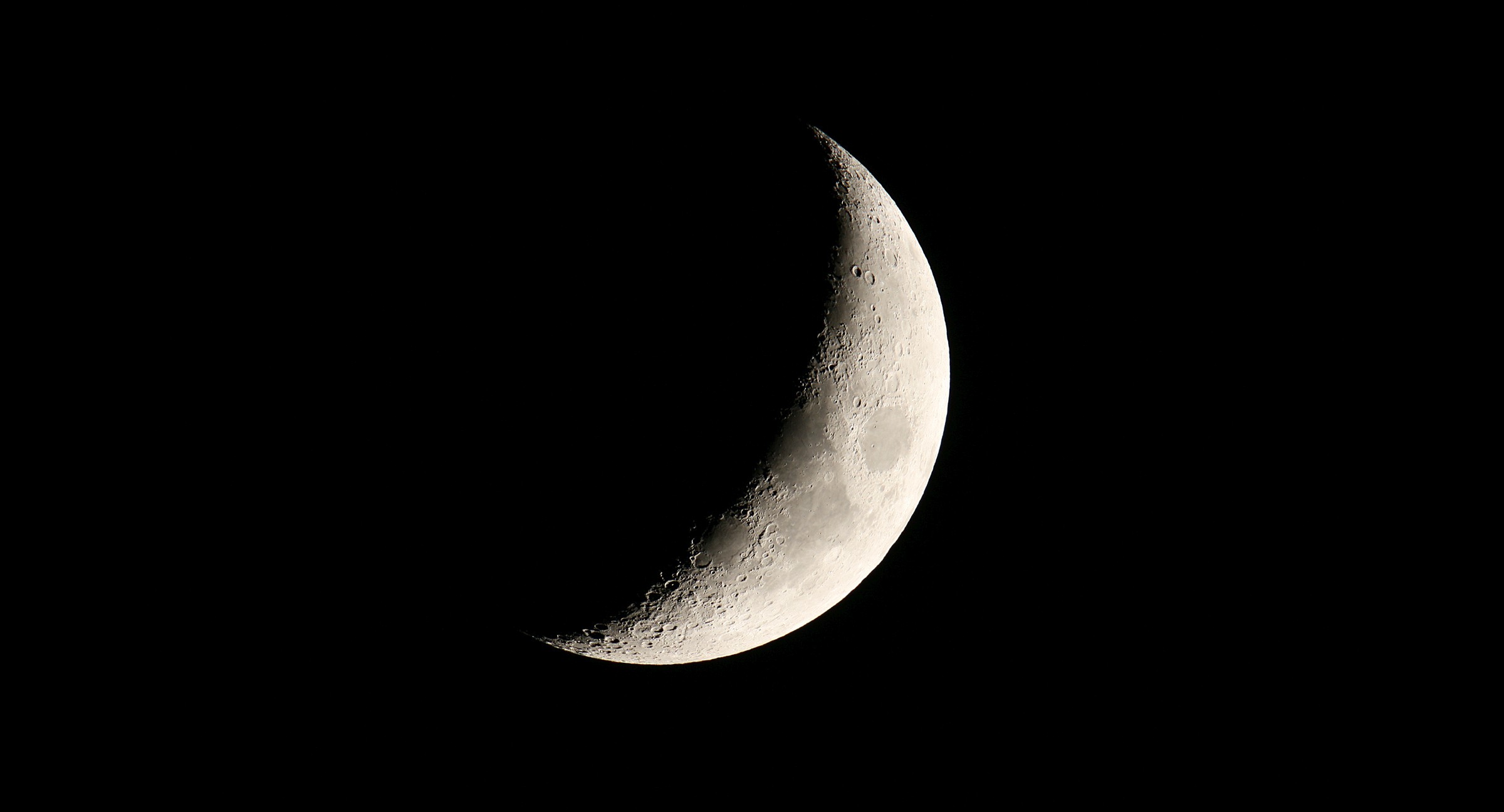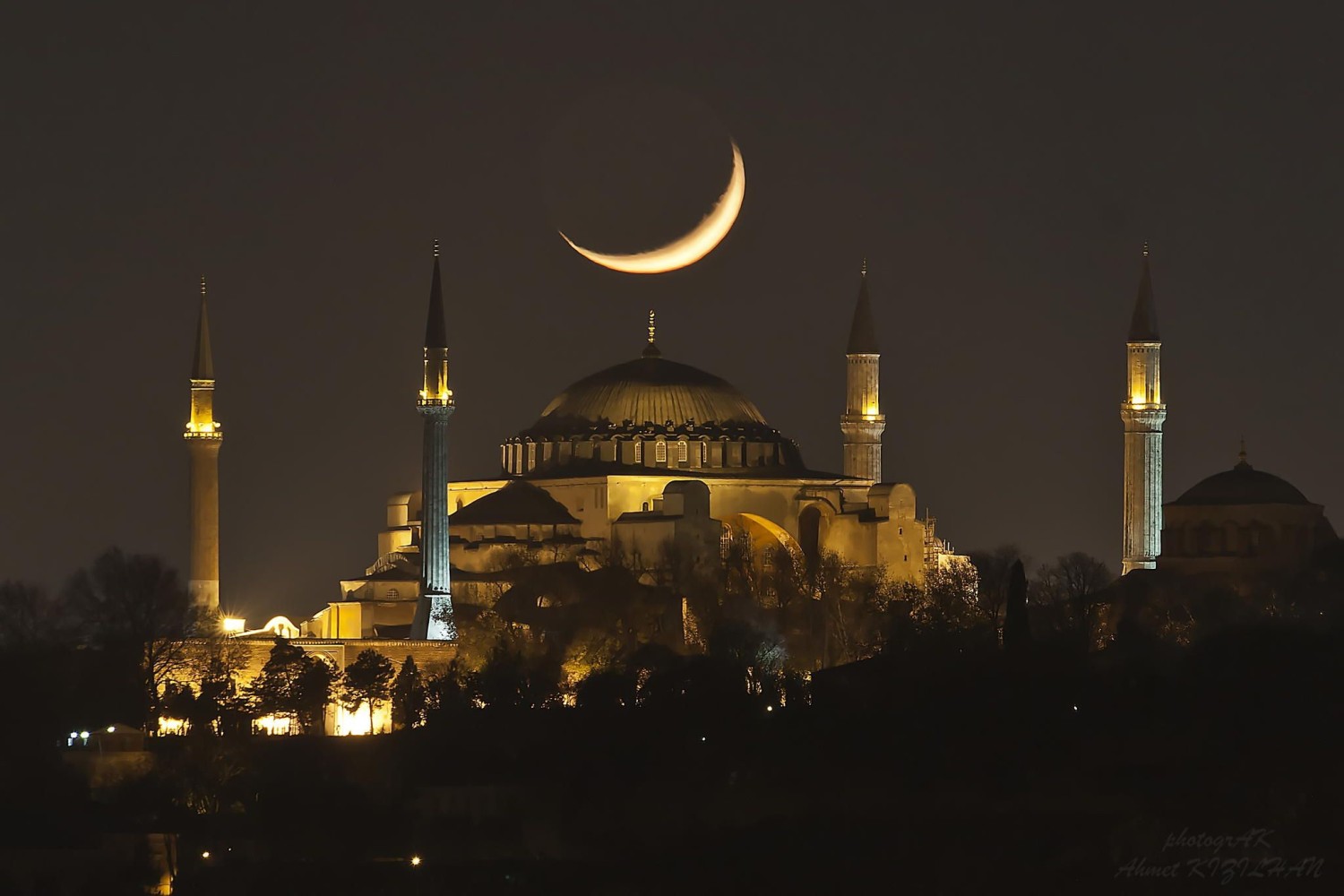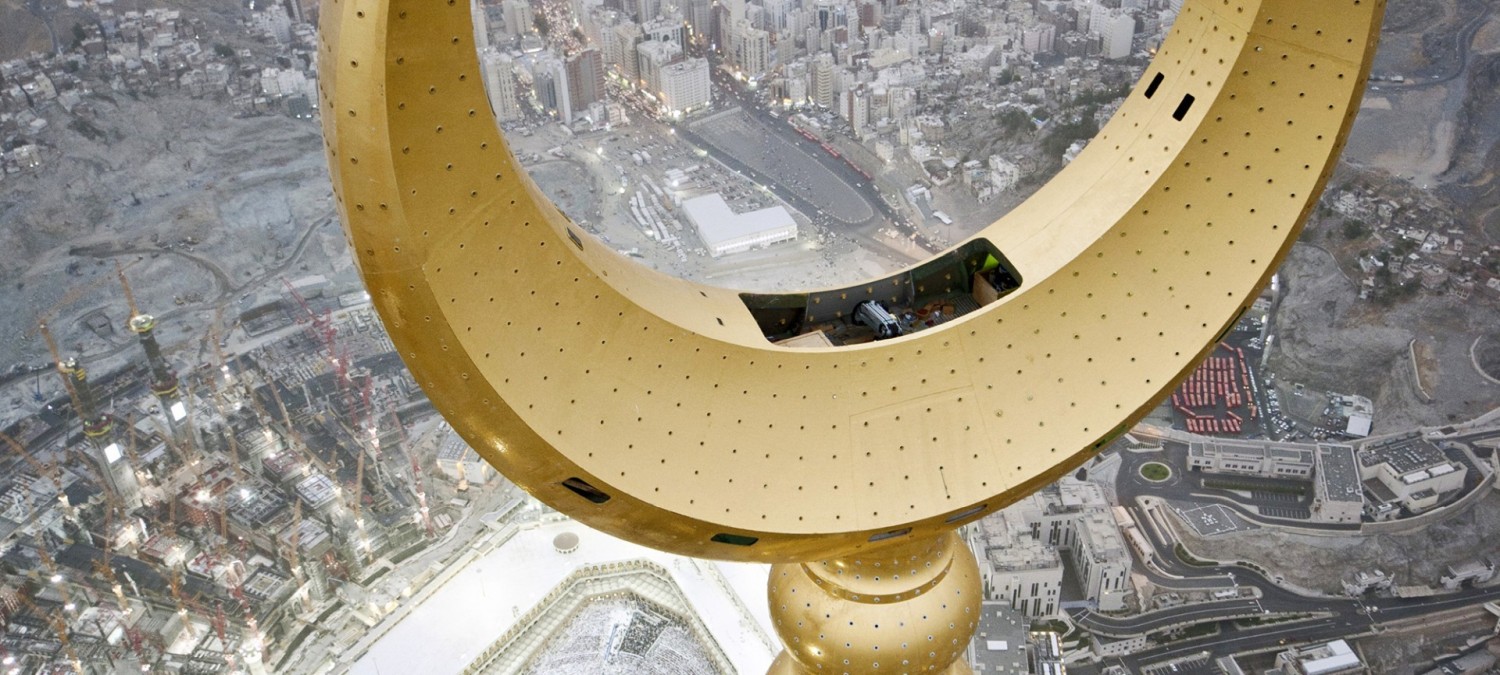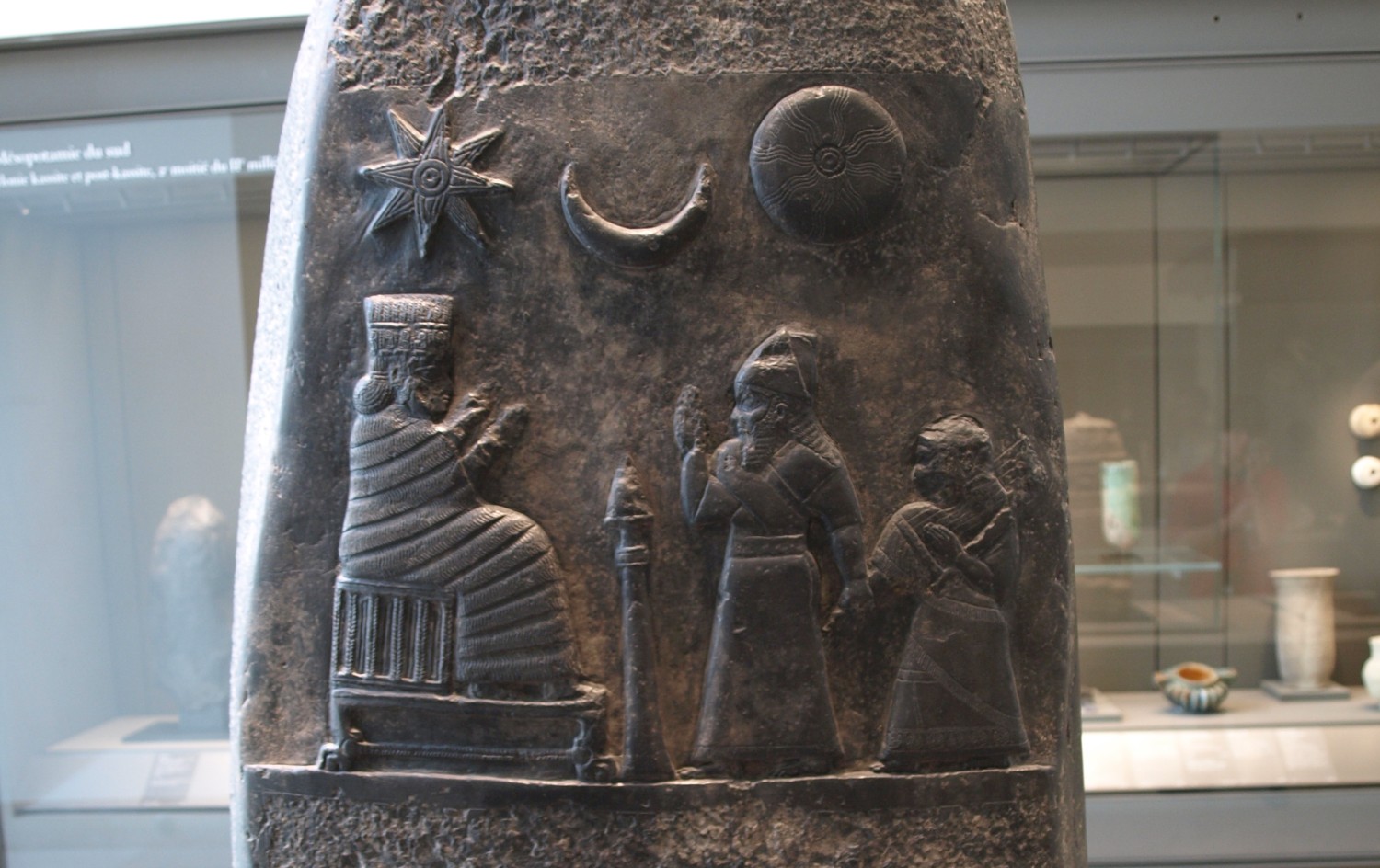Allah
The pagan moon god
Allah is the Arabic word referring to God in Abrahamic religions. The Name of God according to the original Hebrew Torah is YHWH. This has been confirmed by the Dead Sea Scrolls so there can absolutely be no doubt about this fact. Muslims believe the Torah to be inspired by Allah. But apparently, according to Muslims, their "almighty" Allah couldn't prevent its corruption by humans and needed another book resulting in the Quran. Apparently Allah is not so "almighty" then. Nowhere in the "holy" Quran is the Name of God mentioned. If at all the Quran would be linked to the Hebrew Scriptures, as Muslims claim or believe, it should have been mentioned at least once.
Exodus 3:15 (TS2009)
And Elohim said further to Mosheh, "Thus you are to say to the children of Yisra'el, 'YHWH Elohim of your fathers, the Elohim of Abraham, the Elohim of Yitshaq, and the Elohim of Ya'aqob, has sent me to you. This is My Name forever, and this is My remembrance to all generations.'
The Allah of Islam is not the same as the God of the Torah just like the Quran is not in line with the Torah, Psalms and Gospels as is wrongfully claimed by many Muslims. Certainly in this aspect Islam is in line with Catholicism. Just like the church authorities replaced the meaningful and Holy Name of God, YHWH, with the meaningless title "LORD", Islamic authorities used the title 'Allah' which can refer to any pagan god. And it is not so difficult to find out which pagan god...
Crescent Moon
The crescent moon can be found throughout the Islamic world, most notably on top of mosques and on many national flags. It is of course significant that this symbol resides on top of mosques where Muslims go to worship Allah, just like the cross resides on top of Christian churches where Christians go to worship their LORD. We know the Christian cross is a pagan symbol of sun worship. It is easily shown where the crescent moon comes from...
Its ancient association with Ishtar/Astarte and Diana is preserved in the Moon (as symbolised by a crescent) representing the female principle (as juxtaposed with the Sun representing the male principle), and (Artemis-Diana being a virgin goddess) especially virginity and female chastity. In Roman Catholic tradition, the crescent entered Marian iconography, by the association of Mary with the Woman of the Apocalypse.*
Both elements of the symbol have a long history in the iconography of the Ancient Near East as representing either the Sun and Moon or the Moon and Venus (Morning Star) (or their divine personifications).*
There is no doubt that the crescent moon is a pagan symbol of moon worship still in use today in Islam.
Kaaba
The Kaaba ("The Cube"), is a building at the center of Islam's most sacred mosque, Al-Masjid al-Haram, in Mecca, al-Hejaz, Saudi Arabia. It is the most sacred Muslim site in the world. It is considered the "House of Allah". ... Prior to the spread of Islam throughout the Arabian Peninsula, the Kaaba was a holy site for the various Bedouin tribes of the area. Once every lunar year, the Bedouin tribes would make a pilgrimage to Mecca. Setting aside any tribal feuds, they would worship their pagan gods in the Kaaba and trade with each other in the city. Various sculptures and paintings were held inside the Kaaba. A statue of Hubal, the principal idol of Mecca, and other pagan deities were in or around the Kaaba.*
Hubal was a god worshipped in pre-Islamic Arabia, notably by Quraysh at the Kaaba in Mecca. This pagan god presided inside the Kaaba. Muhammad was born in the Quraysh tribe which worshiped Hubal. The Kaaba is called the "House of Allah". Here's a picture of the pagan crescent moon on top of that mosque called the "House of Allah"...
The Kaaba used to be a place of worship of pagan gods. Later it became the place of worship of Allah. Now why would any god want to be worshiped in a place defiled by worship of pagan gods unless being a pagan god himself? This certainly doesn't comply with what the Scriptures say. The God of the Old Testament destroys temples or shrines used for pagan idol worship...
Deuteronomy 12:1-2 (TS2009)
These are the laws and right-rulings which you guard to do in the land which YHWH Elohim of your fathers is giving you to possess, all the days that you live on the soil. "Completely destroy all the places where the nations which you are dispossessing served their mighty ones, on the high mountains and on the hills and under every green tree.
That's very clear. What Muhammad did under the guidance of Allah is contrary to what the God of the Scriptures commanded to do with places of idol worship. Another example where the Quran conflicts with the Scriptures. So Allah is not the same as YHWH. This is also understated by the fact that Muhammad's father who worshiped Hubal was named Abdullah ibn Abdul-Muttalib. Abdullah or Abdallah is a contraction of the Arabic words Abd and Allah. Here's a story about the pagan god Hubal Allah...
A tale recorded by Ibn Al-Kalbi has Muhammad's grandfather Abdul Mutallib vowing to sacrifice one of his ten children. He consulted the arrows of Hubal to find out which child he should chose. The arrows pointed to his son Abd-Allah, the future father of Muhammad. However, he was saved when 100 camels were sacrificed in his place. According to Tabari, Abdul Mutallib later also brought the infant Muhammad himself before the image.*
So Muhammad's grandfather worshiped Hubal who was the Allah at that time. He even called Muhammad's father Abd-Allah. So the pagan Allah worshiped before Muhammad's time did not undergo any change and he didn't get any specification making him a seperate god from the pagan god already worshiped by his father and grandfathers. It is no more than logic to believe that Allah is none other than a continuation of the pagan god who resided in the same place before Muhammad's time, in Saudi Barbaria, where children were being sacrificed by these moon-loving morons. This particular moon-loving moron eventually became Muhammad's grandfather. Like father, like son.
Sin... the heart of the Quran
Surah Ya-Sin is the 36th surah of the Quran. ... The name of the chapter comes from the two letters of the first verse of the chapter, which has caused much scholarly debate, and which Tafsir al-Jalalayn, a Sunni tafsir, interprets by saying, "God knows best what He means by these." Ya Sin is also one of the names of the Prophet Muhammad... It has been proposed that Ya-Sin is the "heart of the Quran".*
Of course Muslim scholars don't like to admit it, but the most logical explanation for the title of Quran chapter "Ya Sin" is that it means "Oh Sin"* which is an ode to Sin, who was the god of the moon in the Mesopotamian mythology of Akkad, Assyria and Babylonia.* That chapter of the Quran is also regarded as the "heart of the Quran". Striking. Concerning religions all roads lead back to pagan Babylon.
Extra...
Answering Islam - the "Allah is a pre-islamic moon-god" hypothesis
Answering Islam - Revisiting the Identity of the pre-Islamic Allah at Mecca Pt. 1
Answering Islam - Revisiting the Identity of the pre-Islamic Allah at Mecca Pt. 2
Answering Islam - Revisiting the Identity of the pre-Islamic Allah at Mecca Pt. 3
Answering Islam - Revisiting... Addendum — Refuting Some Muslim Objections




